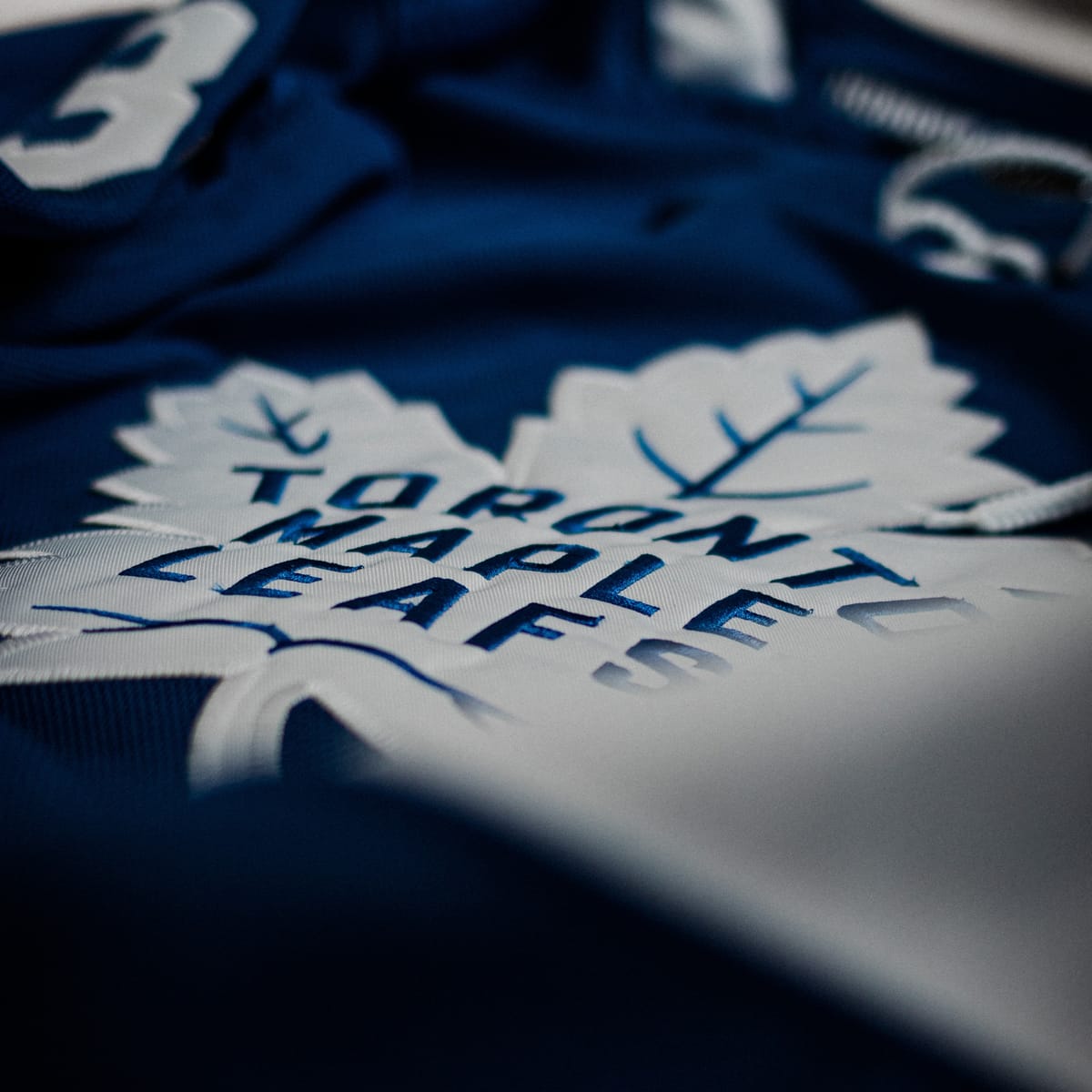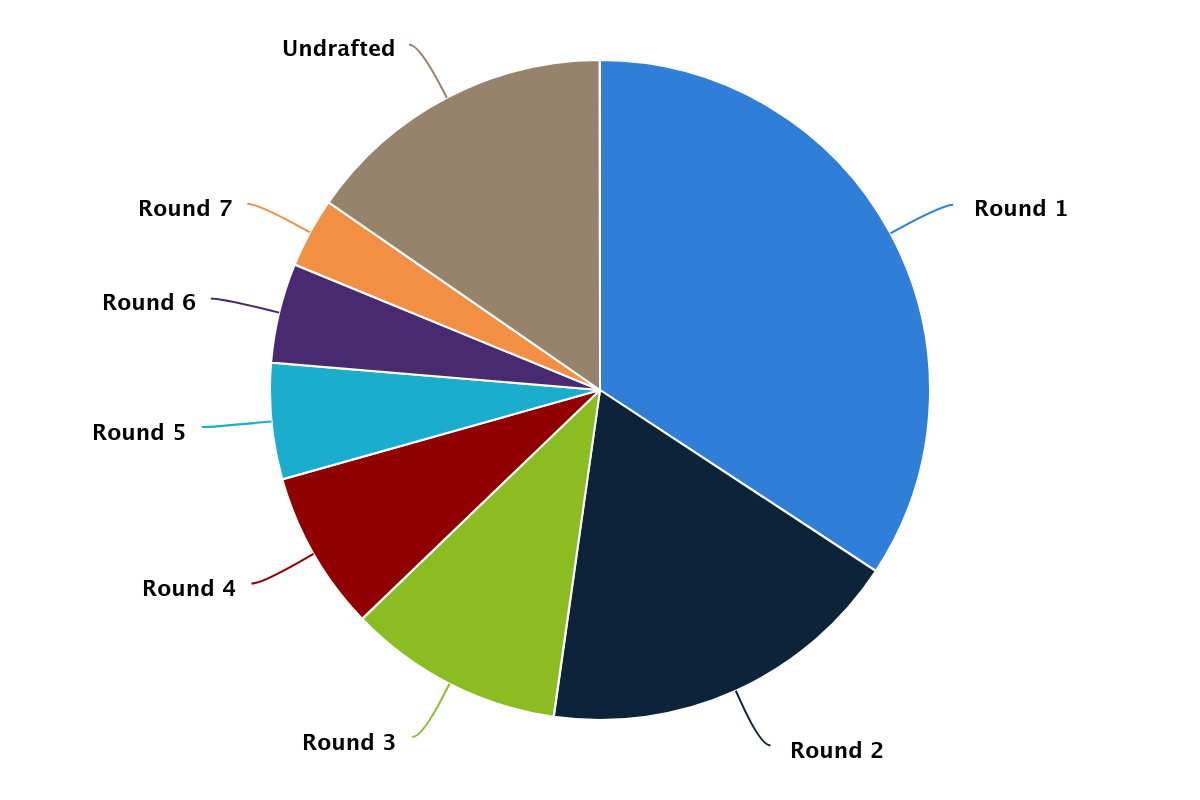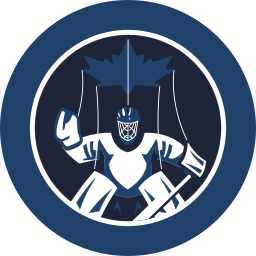In May of 2018, Mark Hunter left the Maple Leafs where he had been an assistant to Lou Lamoriello. In the week prior, Kyle Dubas became General Manager, and it was assumed that Mark Hunter – noted for finding talent for the OHL's London Knights – was responsible for the draft, while Kyle Dubas, also an AGM in the prior year was exiled to the Marlies.
It takes a full staff to prepare for the NHL draft, particularly in the years where Toronto had an excess of picks, but the person in charge does set the tone. Of course, Lamoriello was GM since 2015, so he was the man in charge. But the meme that Hunter was pulling the draft-day strings stuck. And the complaints about his drafting were constant. He only drafted big players, he didn't like skill, he didn't draft Alex DeBrincat (like everyone else). His record with the Knights was ignored, and his ideas were reduced to an exaggerated opposite to the type of player Dubas was supposed to like – the small, zippy winger or puck-moving defender.
It's 2024, and you still have people who believe that Dubas only drafted tiny little players and they resent that bitterly. They sit next to people who believe that Hunter drafted big hulking players and they resent that bitterly.
Back in 2018, I did a post about "Hunter's Drafts" and a few days ago someone emailed to suggest an update, and I thought that was an excellent idea. The main thrust of that 2018 article – and there's some clues there that I was annoyed by the discourse – was that it was way too soon to tell about the players drafted while Hunter was allegedly in charge because most of them were still in the AHL.

Now the youngest is 25, and it's possible to tell how those drafts worked out. In that older post, I mentioned that at that time the Leafs were about as good as any other team. My recollection is that Hockey-Reference, which I'd used to assemble the names, showed current NHL games played, and it was possible to get an idea of how all the teams were doing. A meaningful comparison of team drafting success is beyond the scope of this exercise, so I'll leave that alone. I don't believe anyone has ever made a serious analysis of which GMs drafted well or even which teams.
It is nearly always possible to go back to a draft and find someone better than who was taken even with very high picks. This is fodder for offseason "redraft" lists, accusations of drafting bias and stupidity, and yet it ignores the difficulty of guessing the future of a teenager five years out. It also tends to split drafted prospects into two camps: NHLers and nobodies. And yet, a lot of those nobodies fill the AHL teams or go to Europe to play a more rewarding role. A lot of them are near misses. So what does a near miss mean?
Is the drafter being too cautious? Or is it just the grey area between success and failure that is impossible to fully illuminate before the player is an adult. Whenever the draft is discussed, it's a good idea to remember where players in the actual NHL come from, and Quant Hockey has pie to tell us. Note the size of the undrafted slice which is 15% of the players. It's been my experience that mature cap-strapped teams usually have a bigger section of undrafted players. Toronto's was 24% this season.

Enough theory, let's look at the players drafted from 2015 to 2017. In 2018, only three of them had NHL games played. Now that number is 10 out of 27 prospects, and they're all at their peak performance age, so instead of ordering them by draft year, now it's draft position overall. The results are what you should expect.
| Year | Round | Overall | Player | 2018 NHL GP | 2024 Age | 2024 Team | 2024 NHL GP |
|---|---|---|---|---|---|---|---|
| 2016 | 1 | 1 | Auston Matthews | 144 | 26 | Toronto Maple Leafs | 562 |
| 2015 | 1 | 4 | Mitchell Marner | 159 | 27 | Toronto Maple Leafs | 576 |
| 2017 | 1 | 17 | Timothy Liljegren | 25 | Toronto Maple Leafs | 196 | |
| 2016 | 2 | 31 | Yegor Korshkov | 27 | Amur, KHL | 1 | |
| 2015 | 2 | 34 | Travis Dermott | 37 | 27 | Arizona Coyotes | 329 |
| 2016 | 2 | 57 | Carl Grundstrom | 26 | LA Kings | 236 | |
| 2017 | 2 | 59 | Eemeli Rasanen | 25 | did not play | 0 | |
| 2015 | 2 | 61 | Jeremy Bracco | 27 | HK Sochi, KHL | 0 | |
| 2016 | 3 | 62 | Joseph Woll | 25 | Toronto Maple Leafs | 36 | |
| 2015 | 3 | 65 | Andrew Nielsen | 27 | Vålerenga, Norway | 0 | |
| 2015 | 3 | 68 | Martins Dzierkals | 27 | Skellefteå, SHL | 0 | |
| 2016 | 3 | 72 | James Greenway | 26 | Greenville, ECHL | 0 | |
| 2016 | 4 | 92 | Adam Brooks | 28 | Lehigh Valley, AHL | 43 | |
| 2015 | 4 | 95 | Jesper Lindgren | 27 | IF Björklöven, Allsvenskan | 0 | |
| 2016 | 4 | 101 | Keaton Middleton | 26 | Colorado, AHL | 3 | |
| 2017 | 4 | 110 | Ian Scott | 25 | Retired | 0 | |
| 2016 | 5 | 122 | Vladimir Bobylev | 27 | Rubin, VHL | 0 | |
| 2017 | 4 | 124 | Vladislav Kara | 26 | Vityaz, KHL | 0 | |
| 2015 | 5 | 125 | Dmytro Timashov | 27 | HC Ajoie, NL | 45 | |
| 2017 | 5 | 141 | Fedor Gordeev | 25 | Sibir, KHL | 0 | |
| 2016 | 6 | 152 | Jonathan Walker | 27 | Chamonix, Ligue Magnus | 0 | |
| 2015 | 6 | 155 | Stephen Desrocher | 28 | Glasgow, EIHL | 0 | |
| 2017 | 6 | 172 | Ryan Mcgregor | 25 | Tucson, AHL | 0 | |
| 2016 | 6 | 179 | Nicolas Mattinen | 26 | Straubing, DEL | 0 | |
| 2016 | 7 | 182 | Nikolai Chebykin | 26 | HK Sochi, KHL | 0 | |
| 2015 | 7 | 185 | Nikita Korostelev | 27 | Severstal, KHL | 0 | |
| 2017 | 7 | 203 | Ryan O'Connell | 25 | Toulouse-Blagnac, France3 | 0 |
Pardon the spellings, they were the official names back in 2018.
What surprised me was how many career AHLers of quality or serious KHL players were drafted with very late-round picks. Ryan McGregor has four years in Tucson. Nikita Korostelev has a solid career in Russia.
The best late-round guess here is likely Dmytro Timashov, taken with the 141st overall. He could be one of those AHL lifers who look like they should have made the NHL, but he chose Europe. He's the closest. Or is it Keaton Middleton, tagged as a "large adult son", he's got six years in the AHL, and he's just barely not an NHL depth defender.
Those two plus Adam Brooks turned out better than a host of players drafted higher. Some of those players have personal stories we don't really know, but some, like Jesper Lindgren, are lessons of a different kind.
Back in 2015 prior to his draft, Lindgren had 33 points, of which 27 were assists, in 39 games in what was then called J20 in Sweden. He's hit the 27 mark once since in 52 games in Allsvenskan. Lindgren wasn't just not an NHLer, he was way out of his depth on the Marlies. The first clue came when he couldn't get a job on a men's team in Sweden and went to Finland.
Lindgren is one major reason why I've revised my opinions about players coming out of the Liiga, particularly defenders. I watched him a lot there, and he was fine because being a defencemen in the very algebraic Finnish style of hockey is not very challenging.
I dug up the NHL Central Scouting rankings for 2015, and the European skaters list is very interesting reading. Lindgren was ranked 19th, one behind Sebastian Aho, and no not the other one, the Sebastian Aho. There are five skaters ranked above them I've never heard of. So taking Lindgren in the fourth round was not a reach by the NHL list. It just looks like one now.
Let's play the game of finding the better guy taken later to see how easy it is, and it's the perfect example of this hindsight bias endeavour. Alexandre Carrier, who killed it for the Preds as a right-shooting defender this season, was taken 115th. Kirill Kaprizov is even further down the list.
You need a lot of third- to seventh-round picks to hit the winners. Even with a better scouting department, more tools to analyze them, hopefully some improvements in the NHL's scouting outside North America, you still need luck. There is an oft-cited belief that the Leafs got extremely good at drafting under Dubas, and yet there is no evidence for this, and it's too soon to really know about anything much that happened once he became GM.
I think Hunter's drafts are pretty good, with only three second-rounders who are misses and some later-round guesses that were close. He shouldn't get any credit for the top three, except for Timothy Liljegren. Seventeenth overall is not a sure thing pick. And he doesn't get any credit, generally, since that choice doesn't fit the narrative.
By the way, the undrafted Trevor Moore, signed by the Leafs in 2016, has 345 NHL games played and is the real number three on this list.








Comment Markdown
Inline Styles
Bold: **Text**
Italics: *Text*
Both: ***Text***
Strikethrough: ~~Text~~
Code: `Text` used as sarcasm font at PPP
Spoiler: !!Text!!